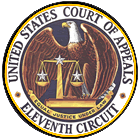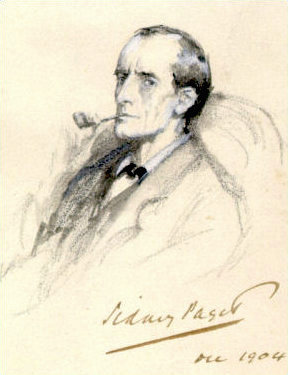
Fair use is a doctrine in United States law that permits limited use of copyrighted material without having to first acquire permission from the copyright holder. Fair use is one of the limitations to copyright intended to balance the interests of copyright holders with the public interest in the wider distribution and use of creative works by allowing as a defense to copyright infringement claims certain limited uses that might otherwise be considered infringement. The US "fair use doctrine" is generally broader than the "fair dealing" rights known in most countries that inherited English Common Law. The fair use right is a general exception, that applies to all different kinds of uses with all types of works. In the U.S., fair use right/exception is based on a flexible proportionality test, that examines the purpose of the use, the amount used, and the impact on the market of the original work.

A&M Records, Inc. v. Napster, Inc., 239 F.3d 1004 was a landmark intellectual property case in which the United States Court of Appeals for the Ninth Circuit affirmed a district court ruling that the defendant, peer-to-peer file sharing service Napster, could be held liable for contributory infringement and vicarious infringement of copyright. This was the first major case to address the application of copyright laws to peer-to-peer file sharing.
Feist Publications, Inc., v. Rural Telephone Service Co., 499 U.S. 340 (1991), was a landmark decision by the Supreme Court of the United States establishing that information alone without a minimum of original creativity cannot be protected by copyright. In the case appealed, Feist had copied information from Rural's telephone listings to include in its own, after Rural had refused to license the information. Rural sued for copyright infringement. The Court ruled that information contained in Rural's phone directory was not copyrightable and that therefore no infringement existed.

Suntrust Bank v. Houghton Mifflin Co., 268 F.3d 1257, was a case decided by the United States Court of Appeals for the Eleventh Circuit against the owner of Margaret Mitchell's 1936 novel Gone with the Wind, vacating an injunction prohibiting the publisher of Alice Randall's 2001 parody, The Wind Done Gone, from distributing the book.
The WIPO Copyright and Performances and Phonograms Treaties Implementation Act, is a part of the Digital Millennium Copyright Act (DMCA), a 1998 U.S. law. It has two major portions, Section 102, which implements the requirements of the WIPO Copyright Treaty, and Section 103, which arguably provides additional protection against the circumvention of copy prevention systems and prohibits the removal of copyright management information.
The copyright law of the United States grants monopoly protection for "original works of authorship". With the stated purpose to promote art and culture, copyright law assigns a set of exclusive rights to authors: to make and sell copies of their works, to create derivative works, and to perform or display their works publicly. These exclusive rights are subject to a time and generally expire 70 years after the author's death or 95 years after publication. In the United States, works published before January 1, 1929, are in the public domain.

Religious Technology Center v. Netcom On-Line Communication Services, Inc., 907 F. Supp. 1361, is a U.S. district court case about whether the operator of a computer bulletin board service ("BBS") and Internet access provider that allows that BBS to reach the Internet should be liable for copyright infringement committed by a subscriber of the BBS. The plaintiff Religious Technology Center ("RTC") argued that defendant Netcom was directly, contributorily, and vicariously liable for copyright infringement. Netcom moved for summary judgment, disputing RTC's claims and raising a First Amendment argument and a fair use defense. The district court of the Northern District of California concluded that RTC's claims of direct and vicarious infringement failed, but genuine issues of fact precluded summary judgment on contributory liability and fair use.

Substantial similarity, in US copyright law, is the standard used to determine whether a defendant has infringed the reproduction right of a copyright. The standard arises out of the recognition that the exclusive right to make copies of a work would be meaningless if copyright infringement were limited to making only exact and complete reproductions of a work. Many courts also use "substantial similarity" in place of "probative" or "striking similarity" to describe the level of similarity necessary to prove that copying has occurred. A number of tests have been devised by courts to determine substantial similarity. They may rely on expert or lay observation or both and may subjectively judge the feel of a work or critically analyze its elements.
Edict of government is a technical term associated with the United States Copyright Office's guidelines and practices that comprehensively includes laws, which advises that such submissions will neither be accepted nor processed for copyright registration. It is based on the principle of public policy that citizens must have unrestrained access to the laws that govern them. Similar provisions occur in most, but not all, systems of copyright law; the main exceptions are in those copyright laws which have developed from English law, under which the copyright in laws rests with the Crown or the government.
Broadcast Music Inc. v. Columbia Broadcasting System Inc., 441 U.S. 1 (1979), was an important antitrust case decided by the Supreme Court of the United States. It examined a complaint brought by CBS affiliates that the method in which broadcast companies determine fees for the issuance of blanket licenses was a violation of the Sherman Antitrust Act. The Supreme Court ruled that the issuance of blanket licenses was not a violation of the act, holding that the nature of blanket licenses did not arise to price fixing.
Omega S. A. v. Costco Wholesale Corp., 541 F.3d 982, was a case decided by the Ninth Circuit Court of Appeals that held that in copyright law, the first-sale doctrine does not act as a defense to claims of infringing distribution and importation for unauthorized sale of authentic, imported watches that bore a design registered in the Copyright Office. It is contrasted with Kirtsaeng v. John Wiley & Sons, Inc.

Ho v. Taflove is a Seventh Circuit case about the copyrightability of scientific data. In 2011, the Seventh Circuit affirmed a 2009 decision of the United States District Court for the Northern District of Illinois holding that the expression of ideas can be copyrighted but not the ideas themselves.
Playboy Enterprises, Inc. v. Starware Publishing Corp. 900 F.Supp. 433 was a case heard before the United States District Court for the Southern District of Florida in May 1995. The case revolved around the subject of copyright infringement and exclusive rights in copyrighted works. Plaintiff Playboy Enterprises filed a motion for partial summary judgment of liability of copyright infringement against defendant Starware Publishing Corporation. Specifically, Playboy Enterprises ("PEI") argued that Starware's distribution of 53 of Playboy's images, taken from an online bulletin board, and then sold on a CD-ROM, infringed upon PEI's copyrights. The case affirmed that it was copyright infringement, granting Playboy Enterprises the partial summary judgment. Most importantly, the case established that "The copyright owner need not prove knowledge or intent on the part of the defendant to establish liability for direct copyright infringement."

Salinger v. Random House, Inc., 811 F.2d 90 is a United States case on the application of copyright law to unpublished works. In a case about author J. D. Salinger's unpublished letters, the Second Circuit held that the right of an author to control the way in which their work was first published took priority over the right of others to publish extracts or close paraphrases of the work under "fair use". In the case of unpublished letters, the decision was seen as favoring the individual's right to privacy over the public right to information. However, in response to concerns about the implications of this case on scholarship, Congress amended the Copyright Act in 1992 to explicitly allow for fair use in copying unpublished works, adding to 17 U.S.C. 107 the line, "The fact that a work is unpublished shall not itself bar a finding of fair use if such finding is made upon consideration of all the above factors."
Kirtsaeng v. John Wiley & Sons, Inc., 568 U.S. 519 (2013), is a United States Supreme Court copyright decision in which the Court held, 6–3, that the first-sale doctrine exhausts copyright of the works lawfully made or purchased abroad.

Veeck v. Southern Bldg. Code Congress Int'l, Inc., 293 F.3d 791, was a 2002 en banc 9-6 decision of the United States Court of Appeals for the Fifth Circuit, about the scope of copyright protection for building codes and by implication other privately drafted laws adopted by states and municipal governments. A three-fifths majority of the court's fifteen judges held that copyright protection no longer applied to model codes once they were enacted into law.

Getaped.com, Inc. v. Cangemi is a 2002 case from the United States District Court for the Southern District of New York concerned with the issue of whether a copyrightable work made available over the internet could be considered published under the Copyright Act of 1976. Through analogy to traditional physical distribution, the court held that this indeed constituted publication.

Klinger v. Conan Doyle Estate, Ltd. was a 2014 decision by the U.S. Court of Appeals for the Seventh Circuit, in response to an appeal filed by the defendants against the 2013 ruling of the U.S. District Court for Northern district of Illinois. These decisions, by the District Court and the Court of the Seventh Circuit, clarified the validity of the use of characters of Sherlock Holmes and his colleague Dr. John Watson, and the story elements, in unlicensed works. Further, the scope of using characters, in the public domain was also clarified.

Monge v. Maya Magazines, Inc. 688 F.3d 1164 is a copyright lawsuit where the court determined if the publication of previously unpublished photographs in a celebrity gossip magazine constitutes fair use. Latin American celebrities singer Noelia Lorenzo and music producer Jorge Reynoso claimed that Maya Publishing Group, LLC and Maya Magazines, Inc. infringed their copyrights by publishing previously unpublished photos of their secret wedding in their celebrity gossip magazine "TVNotas".









